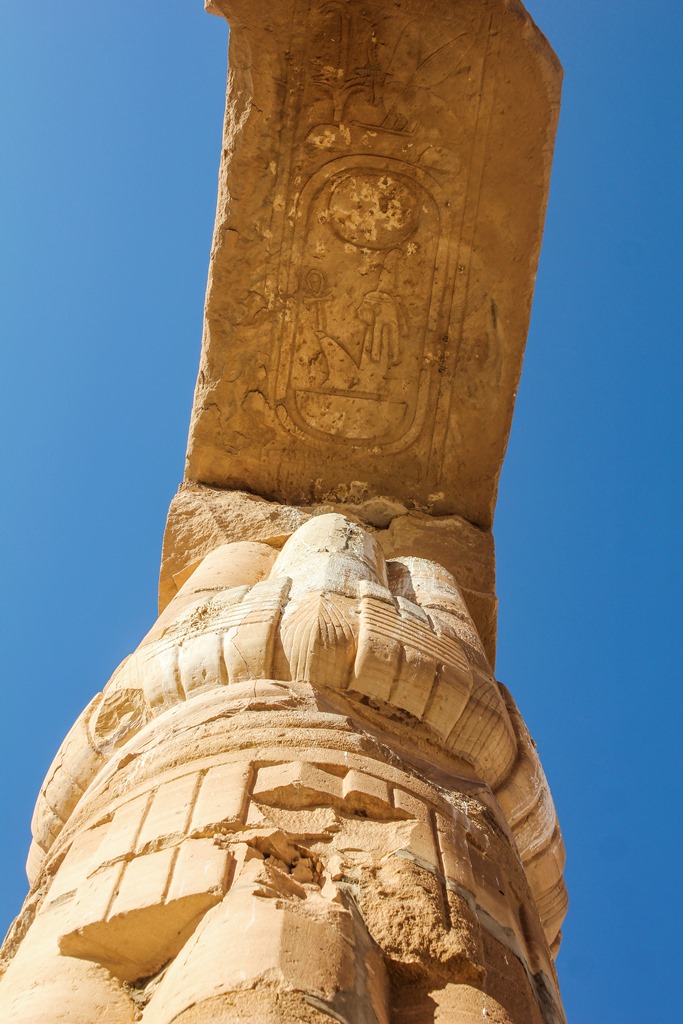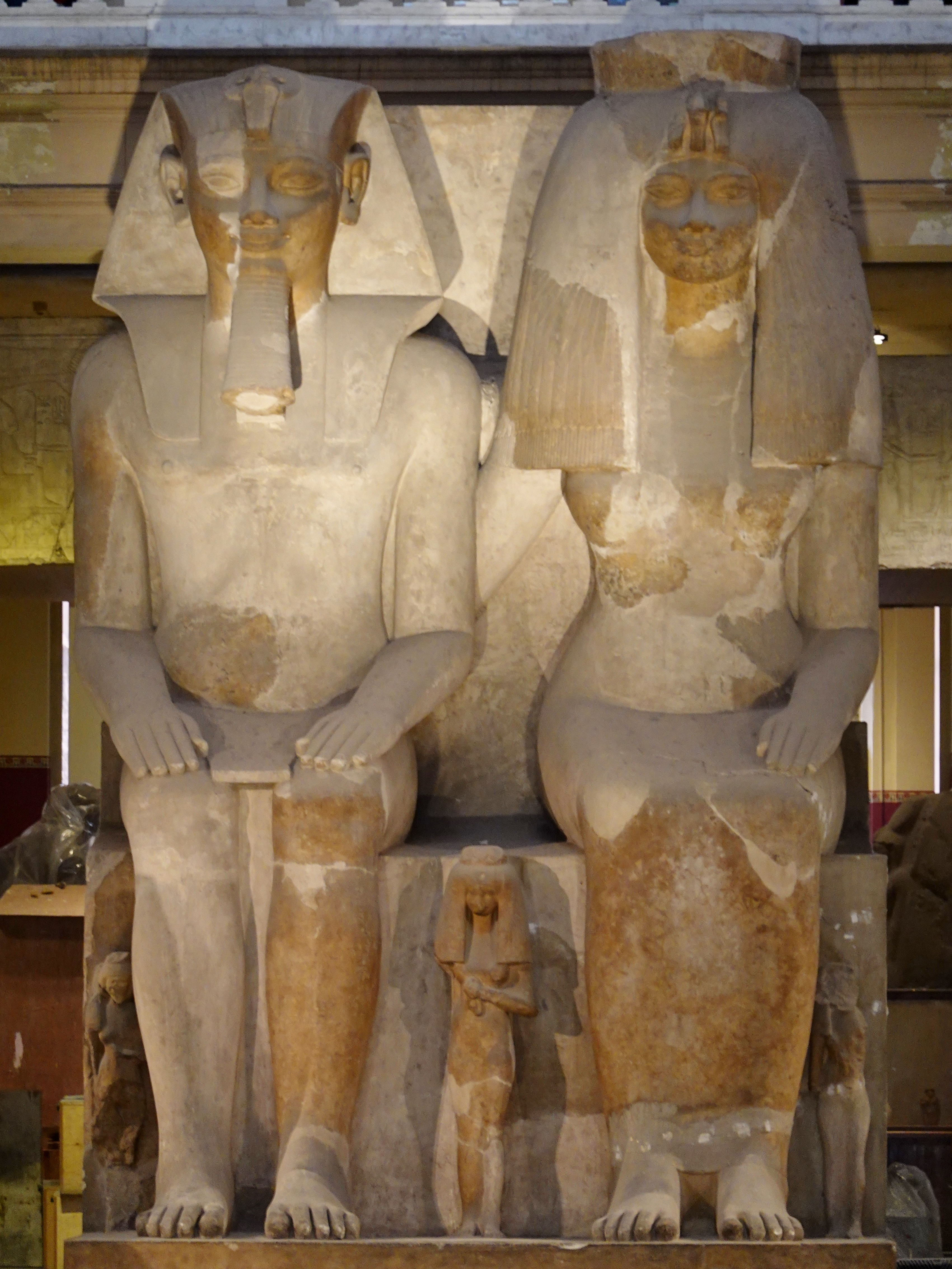|
Soleb
Soleb is an ancient town in Nubia, in present-day Sudan. The site is located north of the third cataract of the Nile, on the western side of the Nile. It was discovered and described by Karl Richard Lepsius in 1844. Necropolis Soleb is also the location of a vast necropolis with small tomb chapels decorated with pyramids. The earliest royal tombs date to the 18th dynasty, whereas some belong to the Ramesside and Meroitic periods. Amarna Period During the Amarna Period (Mid 18th Dynasty), several pharaohs attended to Soleb, such as Amenhotep III, Akhenaten, Tutankhamun, and Ay. Amenhotep III A large temple made of sandstone was founded here by Amenhotep III. It is the southernmost temple currently known to have been built by this pharaoh. The temple was consecrated to the deity Amun Re and to the pharaoh depicted deified with ram-horns. The architect may have been Amenhotep, son of Hapu. At Sedeinga, a companion temple was built by Amenhotep III to Queen Tiye as ... [...More Info...] [...Related Items...] OR: [Wikipedia] [Google] [Baidu] |
Prudhoe Lions
The Prudhoe Lions, or Soleb Lions, are a pair of Ancient Egyptian red granite monumental sculptures dating from the 18th Dynasty, around 1370 BC. They are now presented in the British Museum. The lions originally stood as guardian figures at the Temple of Soleb in Nubia, which was built by the 18th Dynasty King Amenhotep III. Unsurprisingly for such magnificent statues, the lions carry many inscriptions which record their re-use by various rulers. The original inscriptions relate to the pharaoh Amenhotep III. The renewal of the temple by Tutankhamun is also recorded: "he who renewed the monument of (or 'for') his father, the King of Upper and Lower Egypt, Lord of the Two Lands, Nebmare, image of Re, Son of Re, Amenophis, Ruler of Thebes" Another inscription indicates that they were moved by Ay, Tutankhamun's successor. In the 3rd century BC, the lions were moved to Jebel Barkal, a city to the south of the country by Amanislo, a Kushite king of Meroë. Following tradition, Ama ... [...More Info...] [...Related Items...] OR: [Wikipedia] [Google] [Baidu] |
Amenhotep III
Amenhotep III ( egy, jmn-ḥtp(.w), ''Amānəḥūtpū'' , "Amun is Satisfied"; Hellenization, Hellenized as Amenophis III), also known as Amenhotep the Magnificent or Amenhotep the Great, was the ninth pharaoh of the Eighteenth dynasty of Egypt, Eighteenth Dynasty. According to different authors, he ruled Egypt from June 1386 to 1349 BC, or from June 1388 BC to December 1351 BC/1350 BC, after his father Thutmose IV died. Amenhotep was Thutmose's son by a minor wife, Mutemwiya. His reign was a period of unprecedented prosperity and splendour, when Egypt reached the peak of its artistic and international power. When he died in the 38th or 39th year of his reign he was succeeded by his son Amenhotep IV, who later changed his name to Akhenaten. Family and early life Amenhotep was the son of Thutmose IV and his minor wife Mutemwiya. He was born probably around 1401 BC. Later in his life, Amenhotep commissioned the depiction of his divine birth to be displayed at Luxor Temple. Amenh ... [...More Info...] [...Related Items...] OR: [Wikipedia] [Google] [Baidu] |
Sudan
Sudan ( or ; ar, السودان, as-Sūdān, officially the Republic of the Sudan ( ar, جمهورية السودان, link=no, Jumhūriyyat as-Sūdān), is a country in Northeast Africa. It shares borders with the Central African Republic to the southwest, Chad to the west, Egypt to the north, Eritrea to the northeast, Ethiopia to the southeast, Libya to the northwest, South Sudan to the south and the Red Sea. It has a population of 45.70 million people as of 2022 and occupies 1,886,068 square kilometres (728,215 square miles), making it Africa's List of African countries by area, third-largest country by area, and the third-largest by area in the Arab League. It was the largest country by area in Africa and the Arab League until the 2011 South Sudanese independence referendum, secession of South Sudan in 2011, since which both titles have been held by Algeria. Its Capital city, capital is Khartoum and its most populated city is Omdurman (part of the metropolitan area of Khar ... [...More Info...] [...Related Items...] OR: [Wikipedia] [Google] [Baidu] |
Eye Of Ra
The Eye of Ra or Eye of Re is a being in ancient Egyptian mythology that functions as a feminine counterpart to the sun god Ra and a violent force that subdues his enemies. The eye is an extension of Ra's power, equated with the disk of the sun, but it often behaves as an independent goddess. This goddess can be equated with several particular deities, including Hathor, Sekhmet, Bastet, Raet-Tawy, and Mut. The eye goddess acts as mother, sibling, consort, and daughter of the sun god. She is his partner in the creative cycle in which he begets the renewed form of himself that is born at dawn. The eye's violent aspect defends Ra against the agents of disorder that threaten his rule. This dangerous aspect of the eye goddess is often represented by a lioness or by the uraeus, or cobra, a symbol of protection and royal authority. The Eye of Ra is similar to the Eye of Horus, which belongs to a different god, Horus, but represents many of the same concepts. The disastrous effects whe ... [...More Info...] [...Related Items...] OR: [Wikipedia] [Google] [Baidu] |
Queen Tiye
Tiye (c. 1398 BC – 1338 BC, also spelled Tye, Taia, Tiy and Tiyi) was the daughter of Yuya and Thuya. She became the Great Royal Wife of the Egyptian pharaoh Amenhotep III. She was the mother of Akhenaten and grandmother of Tutankhamun. In 2010, DNA analysis confirmed her as the mummy known as "The Elder Lady" found in the tomb of Amenhotep II (KV35) in 1898. Family and early life Tiye's father, Yuya, was a non-royal, wealthy landowner from the Upper Egyptian town of Akhmim, where he served as a priest and superintendent of oxen or commander of the chariotry. Tiye's mother, Thuya, was involved in many religious cults, as her different titles attested (''Singer of Hathor'', ''Chief of the Entertainers'' of both Amun and Min...), which suggests that she was a member of the royal family. Egyptologists have suggested that Tiye's father, Yuya, was of foreign origin due to the features of his mummy and the many different spellings of his name, which might imply it was a ... [...More Info...] [...Related Items...] OR: [Wikipedia] [Google] [Baidu] |
Amenhotep, Son Of Hapu
Amenhotep, son of Hapu (transcribed ''jmn-ḥtp zꜣ ḥꜣp.w''; early-mid 14th century BC) was an ancient Egyptian architect, a priest, a scribe, and a public official, who held a number of offices under Amenhotep III of the 18th Dynasty. Life He is said to have been born at the end of Thutmose III's reign, in the town of Athribis (modern Banha in the north of Cairo). His father was Hapu, and his mother Itu. Though little about Amenhotep's early life is known prior to his entering civil service, it is believed that he learned to read and write at the local library and scriptorium. He was a priest and a Scribe of Recruits (organizing the labour and supplying the manpower for the Pharaoh's projects, both civilian and military). He was also an architect and supervised several building projects, among them Amenhotep III's mortuary temple at western Thebes, of which only two statues remain nowadays, known as the Colossi of Memnon, and the creation of the quarry of El-Gabal ... [...More Info...] [...Related Items...] OR: [Wikipedia] [Google] [Baidu] |
Sandstone
Sandstone is a clastic sedimentary rock composed mainly of sand-sized (0.0625 to 2 mm) silicate grains. Sandstones comprise about 20–25% of all sedimentary rocks. Most sandstone is composed of quartz or feldspar (both silicates) because they are the most resistant minerals to weathering processes at the Earth's surface. Like uncemented sand, sandstone may be any color due to impurities within the minerals, but the most common colors are tan, brown, yellow, red, grey, pink, white, and black. Since sandstone beds often form highly visible cliffs and other topographic features, certain colors of sandstone have been strongly identified with certain regions. Rock formations that are primarily composed of sandstone usually allow the percolation of water and other fluids and are porous enough to store large quantities, making them valuable aquifers and petroleum reservoirs. Quartz-bearing sandstone can be changed into quartzite through metamorphism, usually r ... [...More Info...] [...Related Items...] OR: [Wikipedia] [Google] [Baidu] |
Joann Fletcher
Joann Fletcher (born 30 August 1966) is an Egyptologist and an honorary visiting professor in the department of archaeology at the University of York. She has published a number of books and academic articles, including several on Cleopatra, and made numerous television and radio appearances. In 2003, she controversially claimed to have identified the mummy of Queen Nefertiti. Early life and education Fletcher was born on 30 August 1966 in Barnsley. She was educated at Barnsley College, a sixth-form and further education college in Barnsley. She studied ancient history and Egyptology at University College London, specializing in the Ptolemaic dynasty and Cleopatra, and also in ancient Egyptian hair, wigs, and forms of adornment. She graduated with a Bachelor of Arts (BA) degree in 1987. Her Doctor of Philosophy (PhD) degree completed in 1996 was undertaken at the University of Manchester, with the thesis on hair and wigs entitled "Ancient Egyptian Hair: a study in style, form ... [...More Info...] [...Related Items...] OR: [Wikipedia] [Google] [Baidu] |
Eric H
The given name Eric, Erich, Erikk, Erik, Erick, or Eirik is derived from the Old Norse name ''Eiríkr'' (or ''Eríkr'' in Old East Norse due to monophthongization). The first element, ''ei-'' may be derived from the older Proto-Norse ''* aina(z)'', meaning "one, alone, unique", ''as in the form'' ''Æ∆inrikr'' explicitly, but it could also be from ''* aiwa(z)'' "everlasting, eternity", as in the Gothic form ''Euric''. The second element ''- ríkr'' stems either from Proto-Germanic ''* ríks'' "king, ruler" (cf. Gothic ''reiks'') or the therefrom derived ''* ríkijaz'' "kingly, powerful, rich, prince"; from the common Proto-Indo-European root * h₃rḗǵs. The name is thus usually taken to mean "sole ruler, autocrat" or "eternal ruler, ever powerful". ''Eric'' used in the sense of a proper noun meaning "one ruler" may be the origin of ''Eriksgata'', and if so it would have meant "one ruler's journey". The tour was the medieval Swedish king's journey, when newly elected, to s ... [...More Info...] [...Related Items...] OR: [Wikipedia] [Google] [Baidu] |
David O'Connor (Egyptologist)
David Bourke O'Connor (5 February 1938 – 1 October 2022) was an Australian- American Egyptologist who primarily worked in the fields of Ancient Egypt and Nubia. O'Connor is the Lila Acheson Wallace Professor Emeritus at New York University's Institute of Fine Art, the Curator Emeritus of the University of Pennsylvania's Egyptian Museum, and the director emeritus of the Abydos Archaeology expedition in Egypt. O'Connor is most well known for his work in the excavation of the ancient city of Abydos in Egypt since 1967. Early life Born in Sydney in 1938, O'Connor's interests in archaeology and ancient history originated when he was a child. His initial interest centred around the ancient civilization of Babylon. O'Connor built a replica of the city of Babylon out of bricks in a field adjacent to his home, and recreated the Fall of Babylon by setting the field alight during the height of the 1968-69 bushfires in New South Wales. Education O'Connor received a Bachelor of ... [...More Info...] [...Related Items...] OR: [Wikipedia] [Google] [Baidu] |





Saunders_Quarry-1.jpg)
.jpg)